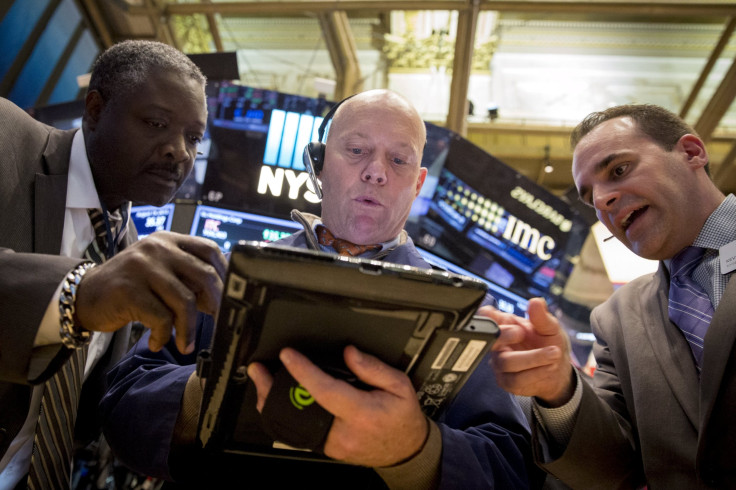Dow Jones Industrial Average Plunges 200 Points On Global Growth Fears

U.S. stocks traded sharply lower Thursday morning, with the Dow Jones Industrial Average plunging 200 points after oil prices tumbled to near $40 a barrel. The S&P 500 turned negative for the year after all 10 sectors traded lower, led by a 1.5 percent decline in financial stocks.
The losses in financial stocks were fueled by fears that the U.S. Federal Reserve may wait until after September to raise interest rates, a delay due to global growth concerns. Policy makers need more confidence that inflation is moving toward their goal before the Fed will lift rates, minutes released a day earlier from the central bank's July meeting showed.
The Dow Jones Industrial Average (INDEXDJX:.DJI) tumbled 202.37 points, or 1.17 percent, to 17,146.36. The S&P 500 index (INDEXSP:.INX) lost 22.07 points, or 1.06 percent, to 2,057.30. And the Nasdaq composite (INDEXNASDAQ:.IXIC) dropped 72.56 points, or 1.44 percent, to 4,945.77.
For the year, the Dow has lost 679 points, or 3.8 percent and the S&P 500 has lost 4 points, or 0.17 percent. However, the Nasdaq has gained 204 points, or 4 percent.
U.S. oil prices extended losses Thursday, tumbling to six-year lows following an unexpected rise in crude stockpiles. West Texas Intermediate crude, the benchmark for U.S. oil prices, fell 0.07 percent to $40.77 per barrel for September delivery on the New York Mercantile Exchange. On the London ICE Futures Exchange, Brent crude, the global benchmark for oil prices, fell 1 percent to $46.66.
However, there was a bright spot Thursday. U.S. existing home sales rose to an 8-year high in July, marking its highest level since 2007 -- a strong sign for the U.S. housing market. Existing home sales increased 2 percent to an annual rate of 5.59 million units, up from a revised 5.48 million units in June, the National Association of Realtors said Thursday.
There is a great deal of pent-up demand for homes, says Gus Faucher, senior macroeconomist at PNC Financial Services Group. “Many potential buyers put off purchasing a home in the aftermath of the Great Recession, but as the economy gets better they are moving into the market,” Faucher said in a note Thursday.
Separately, the number of Americans filing new applications for unemployment benefits unexpectedly rose last week as initial claims for state unemployment benefits increased 4,000 to a seasonally adjusted 277,000 for the week ended August 15, the Labor Department said Thursday.
However, job gains have averaged 211,000 per month so far in 2015, and economists say claims are consistent with continued monthly job growth of better than 200,000 through the rest of this year.
“This is more than enough to keep up with new entrants into the workforce, and thus the U.S. economy continues to absorb the job market slack remaining from the Great Recession,” Faucher said.
The U.S. unemployment rate remained at 5.3 percent in July, and Faucher expects unemployment to gradually decline further in 2015, ending the year at around 5 percent.
© Copyright IBTimes 2024. All rights reserved.






















